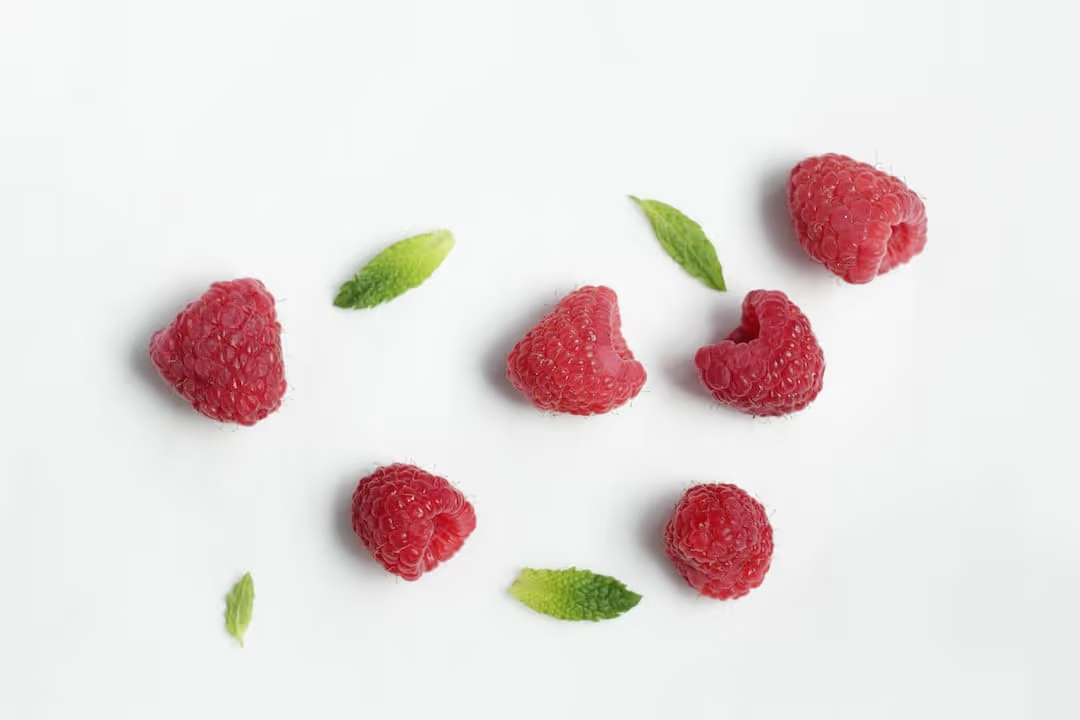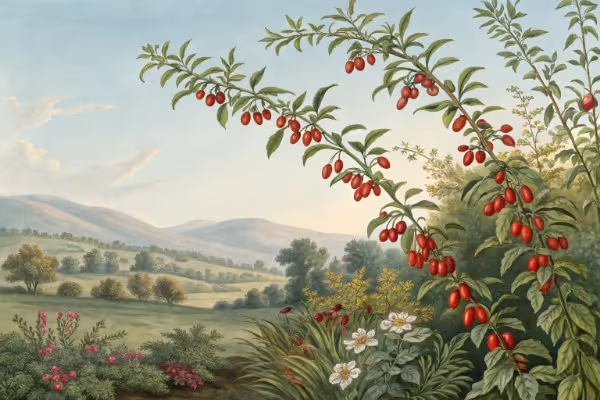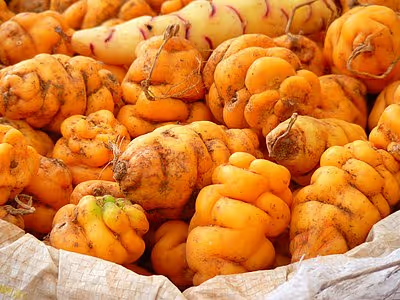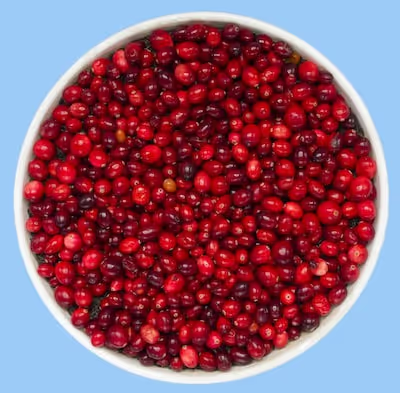Growing Raspberry Plants for a Sweet Backyard Harvest

Growing Raspberry
Growing raspberry bushes in your backyard delivers baskets of sweet berries and vibrant foliage year after year. Plant raspberry canes in well-drained soil with at least six hours of daily sun, mulch generously, and prune annually for abundant yields. This ultimate guide shares practical tips and proven techniques to help transform your yard into a luscious berry patch—scroll down and let's get planting.
Cheatsheet: Backyard Raspberry Planting & Harvest
🌱 Best Varieties
- Summer-bearing: ‘Heritage’, ‘Latham’
- Everbearing: ‘Caroline’, ‘Autumn Bliss’
- Black & yellow: ‘Bristol’, ‘Fall Gold’
🌞 Planting Spot
- Full sun (6+ hrs)
- Well-drained, fertile soil (pH 6.0–6.8)
- Shelter from wind
🗓️ Planting Timing
- Early spring, after soil thaws
- Space 18–24" (45–60cm) apart in rows 6' (1.8m) apart
🧰 Tools and Products You’ll Need
- Shovel
- Pruners
- Garden gloves
- Compost
- Mulch (straw or wood chips)
- Trellis or stakes
- Soaker hose or watering can
- Disease-free raspberry canes
- Organic fertilizer
- pH test kit
🌿 Growing Method
- Test soil; amend with compost for fertility.
- Plant canes; cover roots fully, water deeply.
- Mulch thickly (2–4"/5–10cm) to keep soil moist.
- Install trellis for support & airflow.
- Water 1–2” (2.5–5cm) per week, keep roots moist not soggy.
- Fertilize each spring; avoid high-nitrogen formulas.
✂️ Pruning & Maintenance
- Prune dead canes after harvest
- Thin for airflow; reduce disease risk
- Renew plantings every 10 years for yield
🍓 Harvest & Yield
- Harvest daily at peak ripeness, June–July (summer), August–October (everbearing)
- Average 4–8 lbs (1.8–3.6 kg) per plant/year
- Refrigerate berries, eat or freeze within 2 days
💪 Health & Self-Sufficiency
- High in fiber, vitamin C, manganese, antioxidants
- Homegrown = zero pesticides, maximum flavor
- 1 cup (123g) = only 64 calories
-
Growing Raspberry: Site, Soil, and Sun
I chase light like a cat, and raspberries feel the same way. Aim for full sun at 6 to 8 hours, and avoid wind tunnels that desiccate canes in July heat.
Give them well-drained soil with a pH of 5.5 to 6.5, and they’ll pay you back. Waterlogged clay turns canes into compost, so build raised beds 8 to 12 in high, 20 to 30 cm.
I prep beds in fall with 2 to 3 in of compost, 5 to 7.5 cm, then test in spring. If pH runs high, elemental sulfur nudges it down slowly and predictably.
Planting Calendar and Spacing
Plant bare-root canes in early spring once soil is workable, or late fall where winters stay steady. In hot-summer regions, I plant early and mulch immediately.
Space red raspberries 18 to 24 in, 45 to 60 cm, in-row with rows 6 to 8 ft apart, 1.8 to 2.4 m. Black and purple types prefer 3 to 4 ft between plants, 0.9 to 1.2 m, and a hill system.
Choose Your Type: Primocane vs Floricane
Primocane-fruiting raspberries set fruit on first-year canes for a heavy late-summer to fall crop. I mow them to the ground in late winter for a simple, clean system.
Floricane-fruiting raspberries fruit on second-year canes in early summer with outstanding flavor. After harvest, I remove the spent brown canes to open the canopy.
Variety Shortlist by Goal and Climate
- High flavor, early summer: ‘Prelude’ and ‘Killarney’ for zones 4 to 5, USDA.
- Big berries, classic taste: ‘Tulameen’ in cool summers and well-drained soils.
- Reliable fall crop: ‘Heritage’ and ‘Caroline’ in zones 5 to 8 with drip irrigation.
- Heat-tolerant performers: ‘Autumn Bliss’ and ‘Polka’ with afternoon shade in 90 F plus, 32 C plus, summers.
- Thornless option: ‘Joan J’ with sweet, firm fruit and fewer scratches per harvest.
- Containers and patios: ‘Raspberry Shortcake’ in 15 to 20 gal pots, 57 to 76 L, with daily checks in heat.
Buy certified, virus-indexed plants to avoid Raspberry bushy dwarf virus surprises. Bargain canes from unknown sources cost more in lost seasons.
Trellising That Saves Your Back
A simple two-wire line works for most reds. Run wires at 30 and 48 in, 76 and 122 cm, and tie loosely with biodegradable ties.
For heavy crops, a V-trellis opens the canopy for light and airflow. I angle arms at roughly 30 degrees and let canes ride outside the pick zone.
Water, Mulch, and Feeding
Raspberries drink steadily, about 1 to 1.5 in of water weekly, 25 to 38 mm, split into two or three drip sets. In heat waves over 90 F, 32 C, add a short morning pulse to prevent shrivel.
Lay 2 to 3 in of organic mulch, 5 to 7.5 cm, to cool the root zone and suppress weeds. I favor shredded leaves and wood chips, pulled back 2 in, 5 cm, from canes.
I feed lightly in early spring with 2 to 4 oz per plant of a balanced fertilizer like 10-10-10, 57 to 113 g, then again after fruit set. On rich soil, straight compost plus fish hydrolysate keeps growth steady without floppy canes.
Pruning Moves You Can Set a Watch To
Primocane-fruiting single crop method: cut all canes to ground in late winter, then thin new shoots to 4 to 6 strongest per foot of row, 13 to 20 per meter. This trims pest pressure and simplifies everything.
Floricane-fruiting: thin to 4 to 6 canes per linear foot, 13 to 20 per meter, tie to wires, and top at about 5 ft, 1.5 m, for sturdier scaffolds. After harvest, remove spent canes and any that look diseased or weak.
Black raspberries: tip new canes at 30 to 36 in, 76 to 91 cm, to trigger branching. In winter, shorten laterals to 8 to 12 in, 20 to 30 cm, for a tidy fruiting frame.
Harvest Timing and Flavor
Pick when berries turn fully dull-red and slip off with a gentle tug. I harvest every other morning in cool hours and slide fruit onto shallow trays to avoid crushing.
Move raspberries to 32 to 36 F, 0 to 2 C, within 1 hour for best shelf life. Do not wash until serving, and eat within 2 to 3 days because flavor fades fast.
Mature red raspberry plantings often yield 1 to 2 quarts per plant, 0.95 to 1.9 L, in home gardens. Source: Penn State Extension and University of Minnesota Extension.
Growing Raspberry in Tough Spots
Hot-summer gardens benefit from 30 percent shade cloth on the west side during August. In cold zones, I lay canes down and pin with wire hoops, then mulch with 4 in of straw, 10 cm, after the ground freezes.
Heavy clay needs raised rows and generous organic matter, plus gypsum if calcium is low. Sandy soils need more mulch and frequent irrigation pulses.
Pest and Disease Playbook
- Spotted wing drosophila, SWD: pick daily, chill fast, use fine-mesh netting, and avoid letting fruit hang soft. Traps help you time netting and harvest frequency.
- Cane blight and spur blight: prune for airflow, disinfect pruners, and remove dead or split canes after rain events. Mulch to reduce soil splash.
- Verticillium wilt: avoid sites that recently grew tomatoes, potatoes, or eggplant. If in doubt, plant in raised beds with clean soil.
- Japanese beetles and mites: knock beetles into soapy water at dawn and introduce predatory mites when weather turns hot and dry.
- Birds: net before color breaks. I also run reflective tape along the top wire for a low-tech deterrent.
“Pick early and often, and you beat half your pest problems with a basket and a fridge.” Field note from 15 seasons of cane work.
Container Culture That Works
Choose a 15 to 20 gal container, 57 to 76 L, with a gritty mix that drains yet holds moisture, like 60 percent pine bark, 30 percent peat or coir, 10 percent perlite. Keep the crown near the surface and mulch lightly.
Fertilize with a slow-release granular balanced product in spring, then supplement midseason with a mild liquid feed. In heat, water daily and park pots where afternoon sun softens to bright shade.
Smart Gear and Supplies I’d Buy Again
- Drip kit with 0.5 gph emitters, 1.9 L per hour, spaced 12 in, 30 cm, and a simple battery timer.
- Two-wire trellis posts with UV-stable wire and soft plant ties.
- Soil test kit through your local lab, plus sulfur or dolomitic lime to fine-tune pH.
- Fine insect netting, 1 mm mesh, for SWD and birds, with reusable clips.
- Bypass pruners and a small pruning saw. Keep a spray bottle of alcohol for quick disinfecting between plants.
Buying Guide: Bare-Root vs Potted
Bare-root canes are economical and establish fast if planted early and watered well. Potted plants cost more but offer a head start for late spring installs and containers.
Expect 10 to 25 USD, 9 to 23 EUR, per plant from reputable nurseries for named cultivars. Look for certified, virus-indexed stock and avoid plants with mottled leaves or brittle roots.
Five Common Problems and Quick Fixes
- Lots of leaves, few berries: too much nitrogen or too much shade. Cut feed in half and thin canopy to 4 to 6 canes per foot.
- Scorched drupes in heat: water at dawn, add mulch, and use 30 percent shade cloth in the afternoon. Harvest earlier each day.
- Small berries late season: increase irrigation frequency, not volume, and prune harder next winter. Thin fruit load for size.
- Yellowing between veins on new leaves: consider iron chlorosis from high pH. Apply chelated iron and adjust pH with sulfur over time.
- Winter dieback on tips: raise wires so snow loads do not kink canes. In cold snaps below minus 10 F, minus 23 C, add straw wraps.
Advanced Moves: Double-Cropping and Low Tunnels
For primocane types, keep the lower 8 to 12 in, 20 to 30 cm, of canes in winter to get a small early-summer crop on those sections, then a fall crop on new growth. It adds complexity but spreads the harvest window.
Low tunnels, 5 to 6 ft wide, 1.5 to 1.8 m, with vented film shed rain and reduce blight. Combine with exclusion netting to cut SWD pressure and extend picking by 2 to 3 weeks.
Nutrition and Kitchen Notes
A cup of raspberries carries about 8 g of fiber and 32 mg of vitamin C with around 64 calories, per USDA data. I chill fruit, then plate at room temp for peak aroma.
Freeze extras on sheet pans, then bag with a pinch of sugar to guard texture. The frozen crumble into yogurt like ruby gravel.
Fertilizer Math Without Headaches
If a soil test calls for 0.1 lb actual N per 100 sq ft, 48 g per 9.3 sq m, a 10-10-10 delivers that with 1 lb of product, 0.45 kg. Split feeds into early leaf-out and early fruit set to avoid soft growth.
Organic route works too, just slower. I blend compost, feather meal, and kelp, and watch cane color as my gauge.
Growing Raspberry With Companion Planting
I plant low thyme or living clover paths to feed pollinators and keep mud off fruit. Avoid tall companions that shade canes or compete for water.
Marigold borders look cheery, yet the key win is a clear, airy row. Airflow sets the table for clean berries.
References and Source Notes
- United States Department of Agriculture, USDA Nutrient Database, raspberries.
- Penn State Extension, Bramble production guides, pruning and training.
- University of Minnesota Extension, Raspberries for home gardens and yield expectations.
- Cornell University, College of Agriculture and Life Sciences, High tunnel bramble production.
- University of California Agriculture and Natural Resources, Caneberry irrigation and SWD management.
- Royal Horticultural Society, Raspberry cultivation and cultivar notes.
Frequently Asked Questions About Growing Raspberry Bushes
Which raspberry varieties thrive best in home gardens?
Popular raspberry varieties for home cultivation include Heritage, Caroline, and Tulameen. Heritage raspberries produce fruit in late summer and early autumn, while Caroline berries ripen slightly earlier and offer excellent disease resistance. Tulameen berries mature mid-season, prized for their large, flavorful fruits.
What kind of soil conditions support healthy raspberry growth?
Soil preparation plays a foundational role in raspberry cultivation. Raspberry bushes prefer fertile, well-draining soils rich in organic matter, with a slightly acidic pH level between 5.5 and 6.5. Regularly incorporate compost or well-rotted manure into planting beds to maintain nutrient levels and soil structure.
How much sunlight do raspberry plants require each day?
Raspberry plants prosper with full sun exposure, ideally receiving at least 6 to 8 hours of direct sunlight daily. Adequate sunlight encourages optimal fruit production, sweetness, and overall plant health.
What spacing and support systems work best for raspberry bushes?
Provide sufficient spacing and sturdy support to encourage airflow and simplify harvesting. Space red raspberry plants about 2 to 3 feet (60–90 cm) apart within rows, keeping rows approximately 6 to 8 feet (1.8–2.4 meters) apart. Use trellises or wire-and-post systems to support canes and prevent fruit-laden branches from contacting the ground.
When and how often should raspberries be watered?
Proper watering profoundly influences berry quality. During the growing season, apply about 1 to 1.5 inches (2.5–3.8 cm) of water weekly, particularly when rainfall is sparse. Avoid overhead watering to prevent fungal diseases, instead opting for drip irrigation or ground-level soaking methods.
How and when should raspberry bushes be pruned?
Pruning raspberries encourages vigorous growth and larger berries. For summer-bearing varieties, prune immediately after fruiting by cutting back old canes that bore fruit. For autumn-bearing raspberries, prune in late winter by removing canes that fruited the previous autumn, leaving about 6 to 8 healthy canes per plant.
What pests and diseases commonly affect raspberry bushes, and how can they be prevented?
Common pests and diseases affecting raspberries include raspberry beetle, aphids, and fungal infections like gray mold (Botrytis cinerea). Maintain plant health and prevent infestations by consistent pruning, good sanitation practices—removing dead foliage—and application of organic, preventative treatments such as neem oil or insecticidal soap.
How can raspberry harvest yields be maximized?
Consistent attention to optimal watering, fertilizing, pruning, and pest management practices significantly boosts raspberry crop yields. Regular harvesting—typically every two or three days once berries ripen—also promotes ongoing fruit production and reduces spoilage.
Growing raspberry plants rewards you with more than just fruit—it’s about savoring what patience and care can yield. Give your plants sunlight, good drainage, and routine pruning, and you’ll be surprised how generous their harvest can be. Keep an eye out for pests, mulch well, and water deeply. Few things compare to a basket of still-warm berries, plucked just steps from your door. If you’re looking to expand your patch with other unusual edibles, you might find inspiration from guides on growing salal or growing kiwi. In the end, growing raspberry isn’t complicated—it’s about respect for the plant, a little sweat, and letting nature do its job. The payoff is sweet, literally and figuratively.
The Homesteader's Take: Raspberry Self-Sufficiency Essentials
Nutritious Preservation Techniques
- Low-Sugar Jam: Simmer berries with reduced sugar (half common recipes) and add fresh lemon juice to preserve vitamin C and minimize calories.
- Freeze Whole Berries: Single-layer freeze ripe berries on trays overnight, then transfer to airtight freezer containers. Keeps nutrients intact for 8–12 months.
- Dried Raspberry Snacks: Dry berries at 135°F (57°C) until leathery (8–10 hours). Rich source of dietary fiber and antioxidants.
Sustainable Fertilizer Practices
- Comfrey Tea Fertilizer: Soak comfrey leaves in water (1:10 ratio) for 2 weeks, dilute further (1:15), and water plants monthly. Supplies potassium and nitrogen organically.
- Wood Ash Amendments: Lightly broadcast wood ash around raspberry beds once per season. Provides potassium, phosphorous, and calcium, improving fruit quality.
Raspberry Plant Medicinal Uses
- Leaf Tea Benefits: Infused dried raspberry leaves contain iron, magnesium, calcium, and anti-inflammatory flavonoids. Traditionally valued for female reproductive health.
- Berry Vinegar Tonic: Steep crushed berries in raw apple cider vinegar for 2 weeks, strain, then take diluted daily (1 tbsp per cup water) to boost immune system and digestion.
Self-Reliant Propagation Practices
- Root Cuttings: Dig 4-inch (10 cm) root segments in early spring; plant horizontally 2 inches (5 cm) deep in compost-rich soil to multiply canes quickly.
- Natural Cane Layering: Bend vigorous cane tips to ground, cover with soil; roots emerge naturally in 4–6 weeks. Free and easy cane expansion.
Berry Harvest Yield Reference
- Expected Backyard Harvest: Mature raspberry bushes yield 1–2 quarts (1–2 liters) per plant annually, substantially supplementing household fruit consumption.
Find out which plants will thrive in your garden!
Answer a few fun questions and get custom plant recommendations perfect for your space. Let’s grow something amazing together!

start your season





